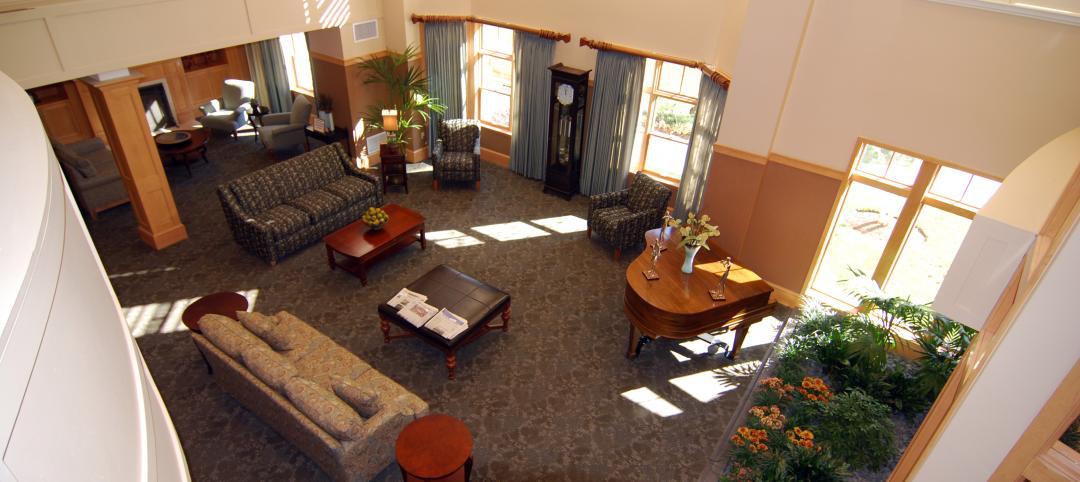Window and door systems need to perform. Period. Over and over again, respondents to Building Design+Construction’s annual window and door survey overwhelmingly
reported that performance, weather resistance, durability, and quality were key reasons a particular window or door was specified.
Respondents also offered opinions on materials choices (aluminum is tops for windows, wood for doors), glazing options (no clear favorites), daylighting (somewhat
of a concern), and use of BIM in window and door selection (not a concern).
Here’s what a representative sample of your peers told us about why and how they choose the windows and doors they use.
(Download a PDF of the full survey report below)
What Factors Influence Selection?
• Respondents overwhelmingly said the top factors influencing their window/window system choices are energy/thermal performance (87%), durability/reliability (73%), and weather resistance (70%). Aesthetics ranked high as well, with 62% of respondents listing it as an important factor. Tax credits, rebates, and other incentives proved not to be significant purchasing factors.
• Performance is also a significant factor for door/door system choices. The top factors influencing door/door system choices—energy/thermal performance (76%), durability/reliability (75%), and weather resistance (65%)—are the same ones respondents cited as influencing their window decisions. Here, aesthetics ranked slightly higher than it did for windows, with 64% of respondents saying it’s a significant influencer. The majority of respondents (58%) choose the door hardware for most projects.
• When it comes to interior door selection, aesthetics ranked highest, with 72% of respondents saying it was their main influence. Other top factors in selection: performance (67%), initial costs (54%), and acoustical performance (43%).
• When asked about specific concerns with window and door products overall, quality/performance was at the top, with 58% of respondents voting it their gravest concern. Second on their list: leaks or failures—very closely related to quality and performance—with 51% expressing concern. Forty-four percent of respondents listed government requirements as their least important concern with window and door projects.
• Several respondents who provided written feedback noted concern about proper installation and the skill levels of contractors who install windows or doors. However, when ranking concerns, only 28% listed installation problems as a major concern.
• The types of projects our respondents undertook greatly influenced window and door selection. Office buildings (56%) and multifamily housing (46%) were most often cited as the project types respondents undertook during the past couple of years. Retail/entertainment (32%) and government/military (29%) projects also ranked high.
Product Selection: A Mix of Materials
• Aluminum (51%) and wood (40%) are the window framing materials most often specified by respondents. Aluminum-clad wood (35%) and vinyl-clad wood (33%) also ranked high as framing materials.
• Wood doors are a favorite for 72% of respondents, while steel doors are also popular, with 58% of respondents specifying them. Aluminum doors and glass doors also fared well, with 39% of respondents specifying aluminum and 38% specifying glass.
• Standard window and door products are an overwhelming favorite of respondents, with 73% saying they specify standard units compared with only 27% who specify custom units.
• Daylighting does play a role in our respondents’ window selections, with 59% saying it was an important or significant factor, while 41% said daylighting was only an average-rated factor to not being a factor at all.
• Although code requirements are a factor in any product decision, when it comes to daylighting, 68% of respondents said code requirements are an important or very important factor. Only 13% said that codes almost never or never factor into daylighting decisions.
Product Types
• When it came to glazing types used in projects during the last couple of years, no particular type stood out above others. Respondents indicated that each specialty type—fire-rated/safety, impact-resistant, laminated, and tinted—were used equally, and in each case in just a few projects.
• One relatively new glazing type, electrochromic glass, was used extensively by only 1% of respondents; 83% reported no use of the technology. Similarly, only 2% reported extensive use of movable glass wall systems, while 72% reported never having used them. Clearly, new technologies like these take some time to gain adoption by AEC professionals.
• Operable windows were used in a significant number of projects, according to respondents who used them extensively (47%), in at least half their projects (21%), or in a few projects (22%). Only 10% reported no use of operable windows.
• Half the respondents reported using skylights and roof windows in just a few projects; 25% reported never having used them. Only 10% reported using them extensively, and 15% reported using them in an average number of projects.
BIM Usage Not Quite a Factor
• Building information modeling doesn’t currently play a major role in our respondents’ window- and door-related projects, with 64% saying they haven’t used BIM in this capacity. Only 11% report extensive use of BIM in making window and door selections. It might be a few more years before BIM usage cranks up for window and door projects because only 15% of respondents expect to use BIM in this capacity in the next couple years. Almost half (48%) said they don’t expect to use BIM in this capacity at all over the next couple years.
SURVEY METHODOLGY
The survey was emailed to a representative sample of BD+C’s subscriber list. No incentive was offered; 451 qualified returns were obtained. The majority of responses (45%) came from architects and designers, a group that represents half of BD+C’s subscriber base. However, respondents were spread across the professions, and included 22% from contractors and 12% from the engineering fields.
Related Stories
| Feb 13, 2012
New medical city unveiled in Abu Dhabi
SOM’s design for the 838-bed, three-million-square foot complex creates a new standard for medical care in the region.
| Feb 10, 2012
Task force addresses questions regarding visually graded Southern Pine lumber
Answers address transition issues, how to obtain similar load-carrying capabilities, and why only some grades and sizes are affected at this time.
| Feb 10, 2012
Atlanta Housing Authority taps Johnson Controls to improve public housing efficiency
Energy-efficiency program to improve 13 senior residential care facilities and save nearly $18 million.
| Feb 10, 2012
Besculides joins New York Office of Perkins Eastman as associate principal
Besculides joins with more than 17 years’ experience in design, business development, and account management for the government, healthcare, and corporate practice areas with a particular focus on the financial and media sectors.
| Feb 10, 2012
Mortenson Construction research identifies healthcare industry and facility design trends
The 2012 Mortenson Construction Healthcare Industry Study includes insights and perspectives regarding government program concerns, the importance of lean operations, flexible facility design, project delivery trends, improving patient experience, and evidence-based design.
| Feb 10, 2012
LAX Central Utility Plant project tops out
Construction workers placed the final structural steel beam atop the Plant, which was designed with strict seismic criteria to help protect the facility and airport utilities during an earthquake.
| Feb 8, 2012
Nauset completes addition and renovation for Winchester senior living community
Theater, library, fitness center, and bistro enhance facility.
| Feb 8, 2012
Mega-malls expanding internationally
Historically, malls have always been the icons of America – the first mall ever was built in Minneapolis in 1956.
| Feb 8, 2012
World’s tallest solar PV-installation
The solar array is at the elevation of 737 feet, making the building the tallest in the world with a solar PV-installation on its roof.
| Feb 7, 2012
AIA introduces seven new contract documents to Documents-On-Demand service??
AIA Contract Documents are widely-used standard form contracts among the building industry to support construction and design projects.
















